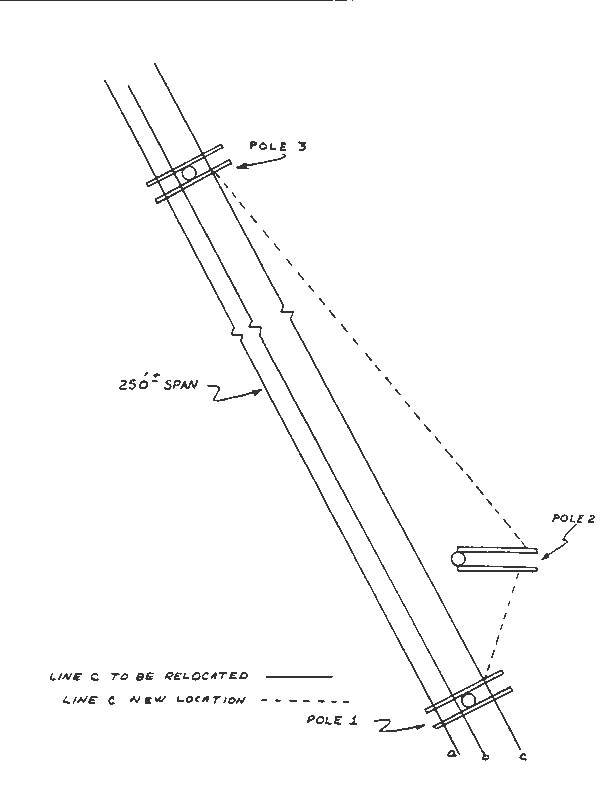Crew Foreman Dies Due to Electric Arc from Power Line
FACE 85-04
Introduction
The National Institute for Occupational Safety and Health (NIOSH), Division of Safety Research (DSR) is currently conducting the Fatal Accident Circumstances and Epidemiology (FACE) Project, which is focusing primarily upon selected electrically-related fatal injuries and confined space fatalities. By scientifically collecting data from a sample of fatal accidents, the FACE will identify and rank factors which increase the risk of fatal injuries for selected employees.
On November 28, 1984, an electrical line construction company foreman died from electrical and thermal burns which were caused by an electric arc.
Contacts/Activities
Subsequent to a request for technical assistance from the State Occupational Safety and Health Administration, a DSR research team, consisting of an occupational health nurse and a safety engineer, assisted in evaluating the incident. The State OSHA compliance officer provided the team with a briefing of the circumstances of the incident and introduced the team to the employer. The employer provided more facts concerning the incident and also provided information regarding the following: employer’s organization, safety program, number of employees, responsibilities for safety, courtesy copy of the employer’s safety manual, review of past injuries within the company, names of witnesses to the incident, names of cohort occupations and employees, and examples of the pieces of equipment which the crew was using on the day of the incident.
Work at the incident site had been completed. Therefore, the team did not survey that particular site. The employer informed the team that a similar activity was being performed at another location and invited the team to survey the new site since it would exemplify the work activities and hazardous exposures.
Synopsis of Events
The employer had contracted with a local utility company to relay some existing lines and add new wire to the system. On the day of the incident, the crew was in the process of performing this work. Refer to figure for layout of the incident work site. The existing span, which had to be moved, was between poles numbered 1 and 3. It consisted of three individual 7200 volt AC lines. These three lines had to be cut and moved to form spans 1 to 2 and 2 to 3. The crew had already moved two of the three lines to pole number 2. The victim was working from an aerial lift device while dead-ending the third span conductor between poles number 1 to 2 (conductor C in figure ). The conductor was attached to the cross arm by a wire grip and come-along. The dead-end of the conductor was to be attached to a dead-end insulator device. However, the conductor was too long for the span and could not be properly attached to the dead-end insulator device, because the wire grip was too close. In the process of correcting this condition, an electric arc occurred which caused the victim’s clothing to catch fire. The crew lowered the aerial lift device to its lowest point and had to rig a hoist line to remove the victim to the ground. The victim was transported to a nearby hospital by rescue squad for emergency treatment and was later transferred to a specialized burn center where he expired the following day. The medical examiner’s probable cause of death was identified as electrocution and severe burns.
General Conclusions and Recommendations
It is concluded that the electric arc occurred while the victim was preparing to move the wire grip on the conductor so the span end could be attached to the dead-end device. The arc occurred as a result of either the victim moving the conductor causing the wire grip clevis to contact the unguarded guy wire or the victim was working between the conductor and guy wire and inadvertently came in contact with both at the same time.
The following factors contributed to this fatal incident:
- The work had to be performed on conductors energized at 7200 volts AC. The contract required that customer service could not be interrupted.
- All conductors within six feet of the work area were not covered with insulators as required by written company safety practices.
- The victim was not wearing rubber sleeves as required by written company safety practices.
- The placement of wire grips on the original span conductor was in error causing one wire grip to interfere with proper dead-ending of the span.
- Foremen had responsibility for enforcement of company safety practices in the field. The company relied upon the foremen to implement the safety practices and rarely observed field activities for compliance.
- The foreman was performing tasks not required by his position.
- The crew worked ten-hour shifts and the incident occurred approximately 8 1/2 hours into the shift.
Recommendation: Upper management should observe the field crew safety practices more frequently. Foremen should be held accountable for implementation of written company safety practices.
Recommendation: All energized or grounding conductors within the work area should be protected by insulating materials as required by written company safety practices.
Recommendation: All crew members should wear the protective clothing and equipment as specified by written company safety practices.
Recommendation: When cutting a span into critical lengths, tape measurements should be made by the ground crew and marked for the aerial workers, or use of other measuring methods should be tried. Optical measuring devices are available and should be practical for use by workers in aerial lift devices.

Figure.
